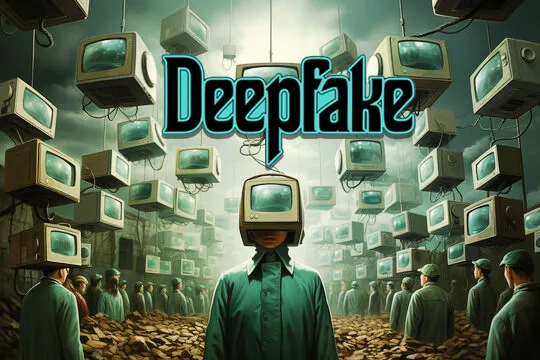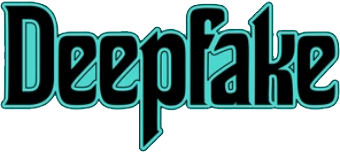Understanding the Digital Mirage: Deepfakes vs Shallowfakes
Introduction to the World of Media Manipulation
In an age where technology blurs the lines between reality and fiction, understanding the nuances of media manipulation is more important than ever. The emergence of deepfakes and shallowfakes has brought new challenges to the integrity of digital media, raising questions about the reliability of information we consume daily.

What is a Shallowfake?
A shallowfake is a form of media manipulation that does not utilize advanced artificial intelligence or machine learning technologies. Instead, it relies on basic video editing tools to modify or fabricate content. This method, being less technologically intensive, is more accessible to the average person, allowing for widespread use. However, the manual nature of shallowfakes often results in less convincing alterations compared to deepfakes.


The Deepfake Phenomenon
Deepfakes represent a significant leap in digital manipulation. Utilizing sophisticated AI and machine learning algorithms, deepfakes can create highly realistic and often indistinguishable counterfeit content. These tools can seamlessly swap faces, mimic voices, and fabricate actions in videos, making them appear startlingly authentic. The term ‘deepfake’ itself originated from a combination of ‘deep learning’ and ‘fake,’ highlighting the role of deep neural networks in their creation.

Distinguishing Features Between Deepfakes and Shallowfakes
Understanding the differences between shallowfakes and deepfakes is crucial in assessing their impact and threat.

Production Methods: Manual vs Automated
Shallowfakes are typically created through manual editing processes, relying heavily on the skills of the editor. In contrast, deepfakes are the product of automated AI algorithms that can learn and adapt, creating increasingly realistic fakes over time. This automation not only enhances the realism but also significantly reduces the time required to create convincing fakes.
The Role of Deep Machine Learning
Deep machine learning, the backbone of deepfake technology, allows for the creation of content that can be near-impossible to distinguish from authentic media. This technology analyses and mimics patterns in facial movements, voice modulation, and even body language, making deepfakes a powerful tool in the hands of skilled individuals.
The Influence of Artificial Intelligence
The absence of AI in shallowfakes confines them to the realm of basic media manipulation. In contrast, the AI-driven nature of deepfakes represents a significant leap in the capability to create convincing fake content. The reliance on AI allows deepfakes to be generated with a level of sophistication that is unachievable with manual editing alone.
The Similarities: Intent and Misuse
Despite their differences, deepfakes and shallowfakes share certain similarities, particularly in their potential for misuse.
Manipulating Reality for Various Purposes
Both technologies are capable of altering reality. Whether used for benign purposes like satire and entertainment or for harmful objectives like misinformation and manipulation, the intent behind their creation plays a significant role in their impact.
The Shared Basis of Pre-existing Content
Deepfakes and shallowfakes both require a basis of existing media content. This content is then altered or repurposed to create a new narrative, often misleading in nature.
Tools in Misinformation Campaigns
These technologies can be powerful instruments in misinformation campaigns. The ability to create convincing false narratives can have profound implications on public opinion and even geopolitical landscapes.
A Call for Responsible Use
The potential for harm underscores the need for responsible use of these technologies. As they become more accessible and advanced, ethical considerations and legal frameworks need to evolve in tandem to mitigate the risks they pose.
Assessing the Threats: Shallowfake vs Deepfake
While both shallowfakes and deepfakes present risks, their threat levels differ based on their creation methods and detectability.
The Accessibility and Risks of Shallowfakes
Shallowfakes, being less technologically demanding, are more accessible to the general public. However, their manual nature often makes them easier to detect. The limitations in their realism can reduce their potential impact, but they remain a concern due to their widespread accessibility.
The Advanced Dangers of Deepfakes
Deepfakes, with their high level of realism, pose a more significant threat. The difficulty in distinguishing deepfakes from genuine content can lead to serious consequences, especially when used to spread false information or manipulate public opinion.
Detection Challenges
Detecting deepfakes often requires sophisticated software capable of analyzing subtle inconsistencies in digital media. In contrast, shallowfakes might sometimes be identified through simpler means, such as inconsistencies in lighting or editing errors. However, as technology advances, distinguishing between real and fake content becomes increasingly challenging, necessitating more advanced detection methods.
Fighting Back Against Falsified Media
Countering these forms of media manipulation involves a combination of technology, public awareness, and legal measures.

The Role of Technology in Detection
Advancements in detection technology are crucial in identifying falsified content. Researchers are developing AI systems capable of detecting deepfakes by analyzing patterns that are imperceptible to the human eye. However, this creates a cat-and-mouse game, as improvements in deepfake technology can quickly outpace detection methods.
The Importance of Public Education and Awareness
Educating the public about the existence and nature of deepfakes and shallowfakes is vital. Raising awareness about the potential for manipulation can foster a more critical approach to consuming digital media. Teaching digital literacy and encouraging skepticism can empower individuals to question and verify the content they encounter.
Legal and Ethical Considerations
As the technology evolves, so must the legal and ethical frameworks governing its use. Legislators and policymakers need to address the unique challenges posed by deepfakes and shallowfakes, balancing the protection of individual rights with the freedom of expression.
The battle against digital deception is complex and ongoing. Deepfakes and shallowfakes, each with their distinct characteristics and threats, represent a significant challenge in the digital age. Staying informed, critically evaluating media content, and supporting technological and legal advancements are essential in maintaining the integrity of digital media and safeguarding the truth.
